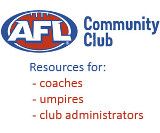2002 Presidents Report
|
|
Its hard to believe that the 2002 USAFL season has drawn to a close. In many ways, my life since October, 2001 has felt like a whirlwind. While unfinished business remains for the league and clubs, I can feel good that we are on the path to continued success.
Frankly, the continued explosive growth of the USAFL is startling. To get an idea, take a look at the number of games played in the US. In 1999, 117 games were played the first time more than 100 games had been played in a single season. By 2001, that had grown to 190, and the question became how long until 200 games is no longer a milestone. At this writing, 196 games are listed as having been played in 2002, and we still have the national tournament to go. Its clear we will reach 200 this season. Now the question becomes, at what point in the 2003 season will we reach 1,000 games, and what two teams will play that historic match.
Why the success? There are a number of factors, I think, but none so important as the dedication of the people involved. While I am most intimately aware of the effort put in by the USAFL Board, the circle is much larger than this. In Santa Cruz, for example, Jeff Finsands has demonstrated a true love for promoting the game to juniors. In Dallas, the Magpies have committed the time and resources to exporting the game to Houston, San Antonio and Austin. In Chicago, Julian Callachor has lead the effort to create another regional league, the Lake Michigan Australian Football League. And in North Carolina, Tim Blankenmeyer has organized an ongoing, feisty competition among university clubs in the Research Triangle.
There are many other examples. At the risk of ignoring other specific examples of individuals and clubs promoting the game tirelessly, I will draw myself up short here. Suffice it to say there are many of us Yanks who have joined our ex-pat Australian friends in loving footy. For all of us, no matter where we live or where we grew up, it is for, as my predecessor Rich Mann always liked to say, for the good of the game.
Jonathan Lenicheck
President
July, 2002
League Growth
The conundrum facing the league as it continues to grow is easy to identify: is growth outpacing our ability to grow? Its a wind sprint for all involved, but I believe the answer is no growth is not moving more quickly than the league can. However, this is an important footnote to the terrific growth footy has experienced since the 2001 Coopers National Tournament.
It has already been noted that the USAFL is on track to preside over 200 games this year, an all-time high. In addition to the dedication of the people involved, there are indeed other factors for this. One is the addition of new teams, in particular the Chicago Sharks and the Western Pennsylvania Wallabies. Establishing a new club is a combination of hard work and good luck; to my observations, the Sharks and the Wallabies have had plenty of the first and enough of the second. Additionally, the Dallas Magpies have invested significant time into fostering two new clubs in Texas one in Houston and another based in Austin but also encompassing players from San Antonio. With continued assistance from Dallas, I expect both clubs to come on line as full-fledged USAFL clubs by 2004.
Indirectly related to these new clubs has been the continued growth of regional leagues in the US. While old friends the MAAFL, CAFL and SEAFL returned as strong as ever, two new leagues came on line this year, the North East Australian Football League and the Lake Michigan Australian Football League. Just as the veteran regional leagues have done, it is my belief that these leagues will foster greater competition and will make scheduling easier for individual clubs.
Lastly, it appears that Metro League footy has firmly taken hold. By now, metro footy in Arizona may be old news. It shouldnt be. The Arizona Australian Football League has grown to six teams, and also hosted the first ever metro footy tournament in February, 2002, with the Orange County Bombers winning the first ever title.
But metro footy has grown well beyond the Phoenix metropolitan area. Leagues have grown in Los Angeles (six teams) and Baltimore/Washington DC (four teams). Boston began its own metro competition in August, 2002. Santa Cruz and Denver also have plans to initiate metro leagues.
We have grown so much in 2002, and I anticipate equally positive growth in 2003.
International Game
2002 is a watershed year for the USAFLs involvement in the international aspect of the game for one major reason and several lesser. The big deal? The International Cup in Melbourne, played over two weeks in August, 2002. The national team, the American Revolution, had enjoyed success thus far in the international arena. However, this year was the first time we tested Americas finest against the best of the rest of the world. The USA emerged from pool play having defeated Samoa, Canada, and the Republic of South Africa, and losing to New Zealand and eventual Cup champion Ireland. In the playoff round, the USA thumped Great Britain to win fifth place. While I could not have predicted this result, I am well pleased with it. By all accounts, the Revolution players acquitted themselves well on and off the field. Kudos to the entire Revolution staff, in particular Head Coach Denis Ryan. While I would not want to endorse unrealistic expectations for the next International Cup in 2005well, lets just say I expect no
worse than fourth place next time.
Looking ahead, I am excited by the possibilities presented by several programs. First, the US will host the Canadian national team, the Northwind, in 2003. The USAFL has enjoyed a friendly competition with our neighbors to the north, but this is the first time we will have had opportunity to officially host a competition with them. Second, in 2004 the Atlantic Alliance Cup will be held on this side of the Atlantic Ocean. I look forward to putting on a good show for our international friends in each of the next two years. Thirdly, the USAFL is moving ahead with plans to form a U23 team to compete in the 2003 Arafura Games in Darwin. This is a calculated risk, and the league is aware of that. The number of under 23 footy players in the States is small; the trip is expensive; it coincides with the end of the academic year for many American universities. Frankly, this venture could fall flat on its face. That is a risk we should all be willing to take. After all, nothing ventured, nothing gained, yes? Lastly, the USAFL has established a relationship with MacQuarrie University in Sydney for a MacQuarrie University Scholarship player. One lucky Yank will qualify to study at MacQuarrie for a semester with free tuition, and train with the universitys football club, the Kookaburras.
Revenue Opportunities
Before discussing new revenue opportunities for the league, its appropriate to acknowledge the continued support of our sponsors from years past, in particular Coopers and Burley Sekem. As well, although not, strictly speaking, a revenue opportunity, its also appropriate to acknowledge Australian Products, which is in its first year as a supporter of the league.
The single most significant piece of news for the USAFL in 2002 may be that the league was granted 501c3 status by the Internal Revenue Service. In simplest terms, this means that the league is now legally a charitable, non-profit entity. While the number of regulations associated with this are significant, even at times daunting, there are three important aspects to this ruling. First, with a few exceptions, the league does not pay taxes. Second, donations to the league may now qualify for tax write offs for the individual or company making the donation. Third, the league has the opportunity to apply for group exemption. This would allow member clubs of the league to also enjoy the advantages of being a 501c3 institution as well as the responsibilities, of course.
There are two other noteworthy new revenue opportunities for the league, the USFooty store and a partnership with Acclaim Entertainment. USFootystore, which may be accessed easily from the USFooty website, represents the leagues first attempt to use the internet for direct revenue purposes. Log on to the footy store, and youll be able to purchase footies, USFooty hats and clothing, even make a donation to the national team, the American Revolution. In time, it is my plan that in the future web surfers will also be able to purchase USAFL club merchandise on USFootystore. Beginning in the late summer, you were able to purchase Acclaim Entertainments AFL Live 03, for PC or Playstation. This groundbreaking partnership between the USAFL and Acclaim promises to provide the league a steady source of income.
Continued AFL Support
Of course, no Presidents Report is complete without specifically acknowledging the support and assistance the AFL has offered, not just this year but since the inception of the league. Perhaps many people may only consider the AFL with regards to dollars, but that is not an entirely accurate picture. Thanks to the efforts of numerous people at the AFL, a list including but not limited to Dr. Ross Smith and Mr. Ed Biggs, the USAFL once again has enjoyed support in putting together the USAFL player and umpire scholarships, increased recognition internationally and assistance in bringing the American Revolution to Australia for the International Cup. I look forward to a continued warm and symbiotic relationship with the AFL.
USAFL Board Make Up
One of the most significant moments in the brief history of the USAFL took place last October, at the 2001 Annual General Meeting. It managed to slip by without much fanfare, which is perhaps as instructive as to the maturity of the league as anything else.
At the 2001 AGM, the USAFLs next generation of leadership began to emerge. Stepping down were long time Executive Board members Cameron Murray, Sue Weeks, Rich Mann and Sheri Archer. Within several months of the AGM, two more long time Board members resigned Michael Gardiner and Todd MacIntosh.
The 2002 Boards composition is far different than its predecessors. There are more Yanks than ever before on the Board. Clubs which have never sent members to the national governance level have done so for the first time. For anyone still needing a sign that the league has become a permanent fixture, you need look no further than this.
- John Lenicheck
(223)
|
|
|






